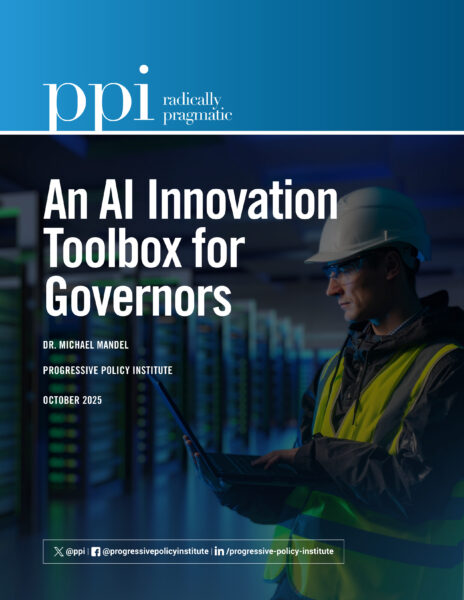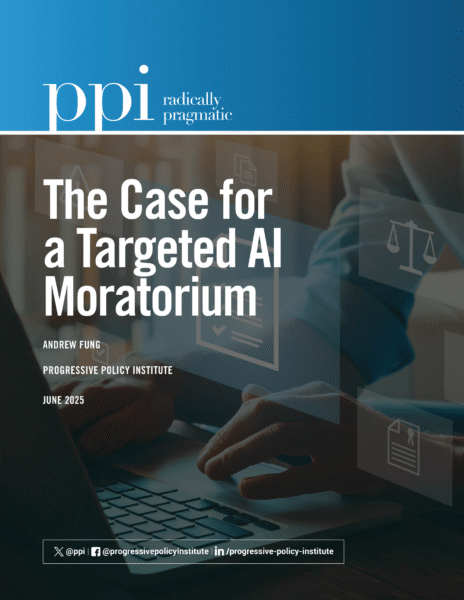In the face of prevailing industry headwinds, many local news outlets around the country have shuttered. Their continued overreliance on an advertising-based revenue model, a vestige of the pre-internet times, leaves them vulnerable to further decline. Just in the last year, 130 more newspapers folded — a rate of two and a half a week — leading to a total loss of over 7,000 newsroom jobs. At the same time, others who took note of changing consumer preferences for the digital over print format saw a net increase of 105 outlets. To not just survive, but thrive in today’s fast-moving news media landscape, where consumers lean towards new formats such as short-form video, local outlets must embrace a tech-forward attitude. This means adopting the newest tools on the block, including AI, that advance newsroom productivity and capacity for producing high-quality, public interest journalism.
Building networks of trust among communities and sustaining vibrant information ecosystems are non-negotiables for healthy democracies. When local news deserts proliferate, communities experience diminished civic engagement: lower voter turnout, fewer contested races, and poorer public participation. It’s no secret either that the loss of reliable sources of information exacerbates urban-rural polarization. National news media rarely covers localities, and even less so when they are located in rural areas. Simultaneously, the most prolific outlets are also often the least attuned to the situation on the ground in most of working America, undermining valuable discourse in overlooked communities.
Reversing these trends requires an honest reckoning with the multi-faceted challenges that local newsrooms face. Their tenuous fiscal situations leave them under-resourced on several fronts. Local reporters must juggle multiple beats at a time, covering city council hearings, school board meetings, and small business openings, all the while performing serious investigative work. This workload makes devoting the requisite attention to unearthing and covering scoops well extremely difficult. Understaffing also inhibits other critical newsroom functions, such as fact-checking, translating, and distributing published stories. Without these supporting activities, local news risks its journalistic credibility and loses reach into communities. The shift to digital further exposes key skill deficiencies in local newsrooms, namely expertise in audience analytics and web design, that inhibit their ability to cater to relevant audiences. That’s especially important at a time when more young people are turning to social media for information that was once the bread and butter of a local newsroom — restaurant recommendations, classifieds, community events, and sporting fixtures.
Given the status quo, local newsrooms should welcome artificial intelligence as a tool for increasing high-quality coverage. AI holds enormous potential for local outlets because it excels at many functions that newsrooms currently lack due to budget cuts. For one, AI thrives when tasked with pattern recognition, which is highly useful for investigations that require journalists to process large datasets, such as troves of municipal documents. Another area of strength is AI’s aptitude for automating already standardized tasks like translation. For local outlets that serve multilingual audiences, accessible translations may meaningfully increase public engagement with existing coverage.
AI may also help newsrooms scale their digital presence to better deliver content in the format that most audiences now prefer, including generating audio and video versions, summaries, and visual explainers. When local news media are able to engage well with their audiences online, their reach significantly expands. AI can help local newsrooms level the playing field in the face of upstart new competitors (like news creators on Instagram), and the larger hedge fund-owned conglomerates (who can invest in digital expertise and apportion the cost across multiple mastheads).
Indeed, it’s clear that newsroom productivity and the development of new capabilities are critical issues given new competitive dynamics and shifting consumer expectations. Consumers have a preference for new formats, as shown by the rise of TikTok as a source of news and the continuing long-term decline in consumers’ use of publisher-owned and operated platforms (e.g., websites and apps) in favor of social media.
At the same time, due to staffing shortages, local reporters have a lot more on their plates than in the past. For example, local reporters covered an average of 3.8 different levels of government in 2000 (e.g., cities, counties, school boards, special districts, townships), which increased to 10 different levels of government in 2020. When they are already spread so thin, building trustworthy sourcing, chasing new leads, parsing through troves of documents, or otherwise pursuing time-consuming investigations becomes a near impossibility.
With the acknowledgement that local newsrooms are under-resourced, AI can play a crucial role in expanding their investigative capacity. Tools like LocalLens, an AI-powered application launched in 2023 that automatically transcribes and summarizes local government meetings, allow journalists to cast their net far and wide for potential story ideas. LocalLens has also helped reporters connect with sources, such as student speakers at school board meetings, whom they might not have found on their own. Another example is the Associated Press’ 2024 launch of LocalLede, which uncovers relevant regulations from over 430 federal agencies for local jurisdictions. LocalLede can serve as a useful starting point for writing stories, flagging new federal announcements like changes to Earned Income Tax Credit (EITC) thresholds. Other AI tools have further enriched investigative journalism, helping reporters process large amounts of public records, including campaign finance disclosures, civil complaints, and municipal budgets.
AI tools also streamline repetitive tasks, allowing local news outlets to redirect limited resources to where they are needed most. Their pervasiveness in copy editing at major publications, for fact-checking and grammar and style corrections, should serve as a model for local newsrooms that still perform these tasks by hand. Natural language-processing-based services like Otter.ai save reporters countless hours whenever they need written transcriptions after conducting interviews. AI has also shown promise in automating translation work. When wildfires swept across Los Angeles in January 2025, the Boyle Heights Beat used a beta version of English-to-Spanish translation GPT to make their coverage and social media updates available to Spanish-speaking members of the community.
For local newsrooms falling behind in their digital offerings due to the lack of technical expertise on staff, AI provides a means to catch up with larger counterparts. THE CITY, a non-profit outlet that covers all boroughs of New York City, currently offers AskNellie, an AI assistant that answers readers’ questions ranging from rent regulations to upcoming elections by connecting them with previous coverage. In 2024, the publication previously used artificial intelligence to create an online map of its areas of coverage, which provided transparency to audiences about whether or not they were sufficiently documenting underserved communities. ARLNow, a local Northern Virginia outlet, increased online engagement through publishing an automated daily newsletter, which they lacked the staff to compile before using AI to do so.
While artificial intelligence has the potential to significantly improve local news media, it is important to approach its rollout with prudence. Failing to think through the specifics of applying AI to specific use cases will result in conspicuous misfires. For example, shortly after launching AI-authored high school sports coverage at several of its local news outlets, including the Columbus Dispatch in 2023, newspaper conglomerate Gannett pulled the project due to widespread backlash from readers for poor quality post-game summaries. Also in 2023, at CNET, editors had to issue numerous corrections to financial advice articles written by AI that contained obvious factual errors. Sports Illustrated showed poor judgment in November 2023 when the publication added fake journalist names and profiles to AI-generated content. When used judiciously, AI is a valuable tool for revitalizing local outlets, bringing them into the modern news media landscape, but it cannot be applied as a blanket solution without thoughtful consideration.
Ultimately, local news must keep up with the times. Embracing AI enables local outlets to make the most out of their limited resources — continuing to produce high-quality investigations, reach larger audiences, and put out competitive digital offerings. While local newsrooms may not completely reverse their decline anytime soon, adopting a tech-forward attitude will at least help them take steps in the right direction, ensuring that they can serve as more robust informational backbones for local communities who rely on their coverage.




